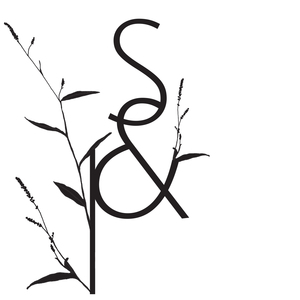A fragrant signifier of the arrival of spring, the invasive wisteria vine produces lovely violet blossoms that provide a fresh, floral take on the classic Italian cello. Now for a few important details before you begin...
Wisteria plants do contain toxins. Only the flowers are safe to consume. That being said, the leaves, vines, roots and especially the seeds are to be avoided; they are poisonous.
When foraging, avoid picking wisteria from busy roadways to avoid pollution by car exhaust. Find a nice clean environment from which to harvest and snip the flowers off the vines in whole clusters.
Set aside plenty of time for gathering blossoms and preparing the cello recipe. It will take a couple of hours to get your infusion going, as manicuring the blossoms is time consuming but worth it. Spread the harvested clusters out on a table and scoot up in a comfortable chair.
As the season progresses, try this recipe using honeysuckle or mimosa blossoms. Always use the ascorbic acid and lemon zest to keep your liqueur tasting fresh.
15-20 freshly snipped wisteria blossom clusters
½ tsp. ascorbic acid powder
5 organic lemons, thoroughly washed
1 liter Everclear or other 190 proof grain alcohol
6 cups distilled water
2 ½ cups granulated sugar
Hold each blossom by its base. With the other hand, gently pinch away all of the petals in one motion. Pinch only the petals from each blossom, leaving the stamen behind. Any green parts will be bitter. Collect the petals until they loosely fill 4 cups.
Scoop ascorbic acid powder into the bottle of alcohol and shake to dissolve. Peel the zest from the lemons, avoiding the white pith. Save lemons for another use.
Combine petals, zest and alcohol in a two-liter glass jar with a tight fitting lid. Give the contents a good stir and store in the refrigerator for two weeks.
After two weeks, strain the solids away using cheesecloth.
Prepare a simple syrup by bringing 6 cups water to a simmer on the stovetop. Add 2 ½ cups sugar, stirring until completely dissolved. Allow the syrup to cool to room temperature.
Combine simple syrup with the infused alcohol and stir well. Ladle into bottles using a funnel.
Store tightly sealed bottles in a cool dark place for at least 2-3 months. The longer the liqueur ages, the better it will taste. Try to let it sit on the shelf for a year if you have the patience.
When ready to drink, store the bottle in the freezer. Serve straight from the freezer into small frosted glasses.
Recipe by Bob Fernandez
Photograph by Paige French

